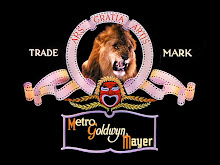 A weird downer of a movie (the poster above shows just how weird; Durante's slayed at the end of the film), MGM's adaptation of Upton Sinclair's novel is like a glossy version of a D.W. Griffith preachathon. It's nearly epic in scope (118 minutes), but bogged down by hammed-up acting and a melodramatic script that couldn't have warranted many raves when the film was new.
A weird downer of a movie (the poster above shows just how weird; Durante's slayed at the end of the film), MGM's adaptation of Upton Sinclair's novel is like a glossy version of a D.W. Griffith preachathon. It's nearly epic in scope (118 minutes), but bogged down by hammed-up acting and a melodramatic script that couldn't have warranted many raves when the film was new.The Wet Parade begins in the south, where gentleman Lewis Stone slowly drinks himself to death, his last stop a pig sty. When his son, played by Neil Hamilton, moves to the north, the story and his sister, played by Dorothy Jordan, follow him.
There the binge drinking continues in a hotel best described as Alcohol Central.The owner of the hotel, overplayed by Walter Huston, is a non-stop lush and when alcoholic Neil Hamilton moves in, he's right at home. Robert Young, the most naturalistic and fresh actor in the film, plays Huston's teetotalling son.
Things get worse from there: after prohibition is instituted, alcoholics turn to bad liquor purchased from bootleggers. When Huston kills his wife in the throes of this stuff and Neil Hamilton goes blind from it, Young and Jordan dedicate their lives to irradicating bad alcohol from the planet Earth.
Then it gets even more odd: Jimmy Durante, portraying a treasury agent, is beamed into this movie from another planet, playing his role as if he were teamed with Buster Keaton instead of Robert Young. There's a lot of "ha-cha-cha"s and lame jokes while busting bootleggers!
Without having read Sinclair's novel. it's hard to determine if the story is more anti-alcohol or anti-government intervention (it could be both). Both are shown as very, very bad. Sinclair's politics banned him from the MGM lot when the film was being made, and he wasn't allowed to speak at the film's premiere (though the audience was expecting it). That's cold.
The one scene in the film that really works (and is probably straight from the novel) methodically and with no dialogue shows an assembly line of criminals packaging alcohol unfit for drinking as if it were name brand product. With the exception of this scene, Victor Fleming's direction is rote stuff.
Side note: The film ironically shows footage of Woodrow Wilson signing the 18th amendment into law, when Wilson had actually vetoed the act (thanks for this info, Mary).
The film also features Clara Blandick, Myrna Loy in a small part and Max Davidson in a short, uncredited role. MGM missed the boat in not fully utilizing his talents.
An amusing review of The Wet Parade on Booze Movies.com: http://www.boozemovies.com/2007/07/wet-parade-1932.html
The Wet Parade is not available on DVD or VHS, but has been broadcast on Turner Classic Movies.






